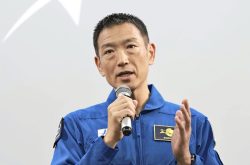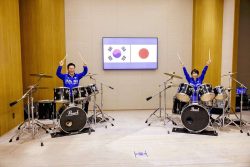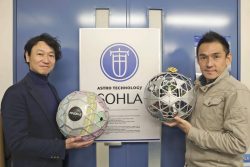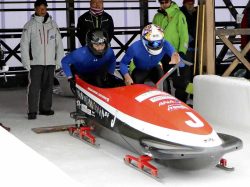Success Launching H3 Rockets Boosts Japan’s Reputation; Lower Costs Vital to Competing in Global Satellite Market
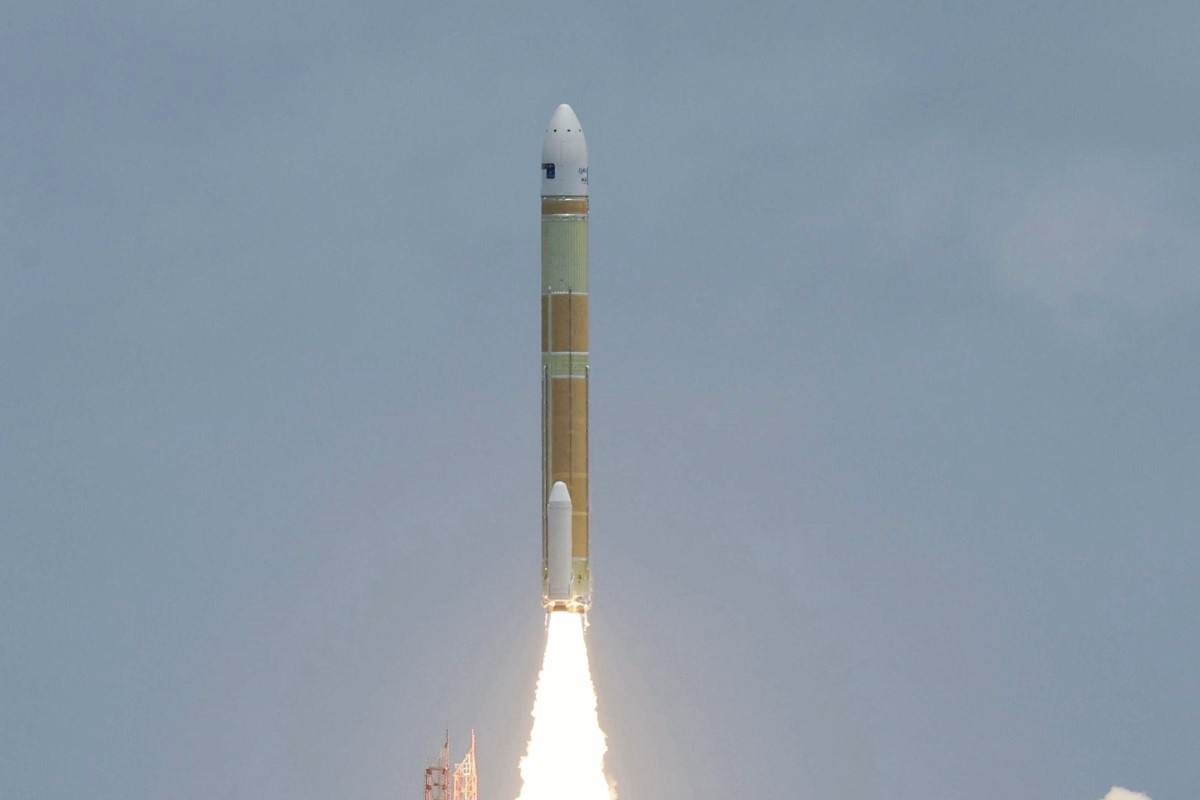
The third H3 rocket is launched from the Tanegashima Space Center in Kagoshima Prefecture on Monday afternoon.
16:49 JST, July 2, 2024
For Japan to increase its presence in the global market for satellite launches, it is essential to further reduce costs and ensure reliability.
The third H3 rocket on Monday successfully placed the government’s Daichi-4 Earth observation satellite into orbit, marking the second consecutive successful launch for Japan’s new flagship rocket. However, the real test is yet to come.
H3 no longer a test vehicle
The first and second H3 rockets were regarded as test vehicles, while the third was the first to be launched for full operations.
“This is the first step toward consecutive successes in the future,” said Makoto Arita, project manager at the Japan Aerospace Exploration Agency, at a press conference at the Tanegashima Space Center in Kagoshima Prefecture.
If JAXA had failed in two rocket launches out of three, it would have damaged Japan’s image overseas. “I believe the launch was watched with a sense of confidence both at home and abroad,” JAXA President Hiroshi Yamakawa said in a relieved tone.
JAXA and Mitsubishi Heavy Industries, Ltd. started developing the H3 rocket in 2014. It was the country’s first new large-scale rocket in about 20 years since the introduction of the current mainstay H2A. The total development cost amounted to ¥239.3 billion.
However, there were many hurdles to putting the newly developed LE-9 first-stage engine into practical use. The first launch of the H3 rocket, which was originally scheduled for fiscal 2020, was delayed to March 2023 and ultimately failed because its second-stage engine failed to ignite.
After an about six-month investigation into the causes of the failure, JAXA successfully launched the second H3 rocket in February this year,
The latest launch proved H3 rocket’s ability to send a large satellite to outer space for the first time. This paves the way for the H3 to replace the current H2A rockets, which are scheduled to be retired this fiscal year.
Reusable rockets
However, the real test for Japan still lies ahead. The government plans to use the H3 to carry into orbit a defense communications satellite and a Michibiki quasi-zenith satellite system that is sometimes called the “Japanese GPS.”
In fiscal 2025 and beyond, the H3 is expected to be involved in important international scientific missions. For example, the rocket is scheduled to carry a rover to explore water resources in the lunar polar region for a joint mission between Japan and India. It will also be involved in a exploration mission for Martian moons, carrying probes to those moons.
Ensuring reliability equivalent to that of the H2A, which has an about 98% success rate for its launches, is another minimum requirement for the H3 to compete in the global market for launching satellites.
Currently, the market is dominated by U.S.-based space company SpaceX, which has developed reusable rockets that return to Earth after being launched. In a bid to compete with SpaceX, new large-scale rockets will be launched one after another around the world.
United Launch Alliance, a U.S. joint venture between Lockheed Martin and Boeing, successfully launched its Vulcan rocket for the first time in January.
The European Space Agency plans to launch its Ariane 6 rocket in July. In Europe, there are moves to develop reusable rockets that are highly competitive in terms of price.
According to the Cabinet Office, 2,368 satellites and other vehicles were launched in 2022, or about 11 times the number a decade before. Rocket launch sites in Russia cannot be used since the country’s invasion of Ukraine, making it impossible to send up satellites, and overseas governments and companies are trying to take advantage of this business opportunity.
For the H3 to win out in the competition, the number of launches must be increased so that the costs of sending up the rocket will be reduced.
JAXA intends to launch its rockets six times a year, up from three times a year for the H2A rockets. Its aim is to sell the H3 at ¥5 billion, half the price of the H2A. By doing so, JAXA aims to increase the competitiveness of the H3.
Two main pillars
In addition to large liquid-propellant rockets including the H3, the government also sees the smaller solid-propellant rocket Epsilon as a mainstay for Japan. Currently, JAXA is developing the Epsilon S launch vehicle with an enhanced launch capability, aiming to launch the new vehicle in the second half of this fiscal year.
The government’s strategy is to capture the market with the two mainstay rockets: the H3, which is capable of carrying large and small satellites, and the Epsilon S, which would carry mainly small satellites.
However, reusable rockets could dominate the global market in the future “If foreign companies other than SpaceX develop reusable rockets, Japan’s rockets will not be able to compete with them,” said Koichi Yonemoto, a former professor of aerospace engineering at the Tokyo University of Science.
The government plans to support private companies in developing their own rockets using the ¥1 trillion Space Strategy Fund. The public and private framework to develop reusable and other rockets must be strengthened, using the fund and other resources.
"Science & Nature" POPULAR ARTICLE
-

‘Fiercest, Most Damaging Invasive Weed’ Spreading in Rivers, Lakes in Japan, Alligator Weed Found in Numerous Locations
-

Univ. in Japan, Tokyo-Based Startup to Develop Satellite for Disaster Prevention Measures, Bears
-

Tsunami Can Travel Vast Distances Before Striking, Warn Japanese Researchers
-
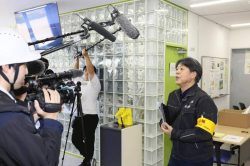
Japan’s H3 Rocket Failed in Latest Launch, Says Official
-
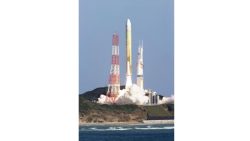
Japan’s H3 Rocket Likely Made 1.5 Trips Around Earth; Analyst Believes Satellite Almost Certainly Lost As Well
JN ACCESS RANKING
-

Japan Govt Adopts Measures to Curb Mega Solar Power Plant Projects Amid Environmental Concerns
-

Core Inflation in Tokyo Slows in December but Stays above BOJ Target
-

Major Japan Firms’ Average Winter Bonus Tops ¥1 Mil.
-

Tokyo Zoo Wolf Believed to Have Used Vegetation Growing on Wall to Climb, Escape; Animal Living Happily after Recapture
-

JAL, ANA Cancel Flights During 3-day Holiday Weekend due to Blizzard


